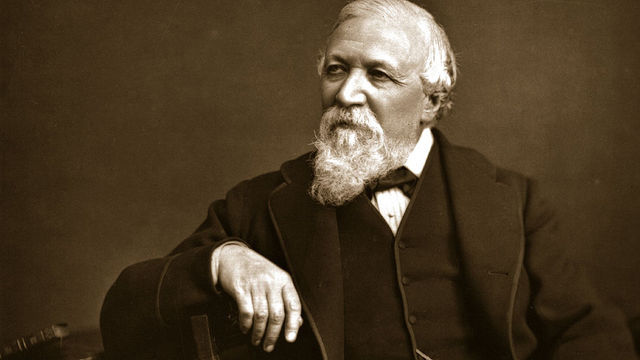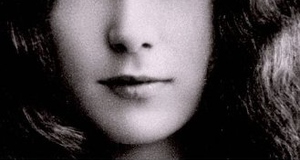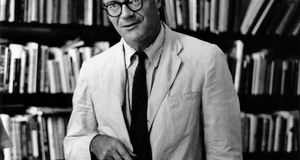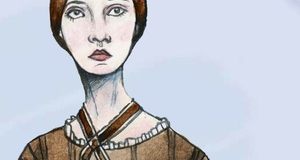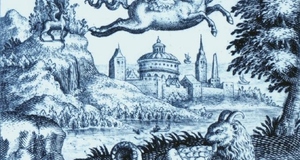The Balance of Power Between Men and Women in Robert Browning's Poems
By
2010, Vol. 2 No. 02 | pg. 1/1
KEYWORDS:
Robert Browning’s two poems, “Porphyria’s Lover” and “My Last Duchess,” have some striking similarities. Both feature men who seem mentally disturbed; Further, both of these men had relationships with "strong" women who, despite apparently loving them, they each ended up killing. And interestingly enough, both men seem to be much happier after they have committed these murders. Yet the most fascinating similarity is that both of these poems deal with power dynamics based on gender. Initially, the females have the power and the men do not. The men feel threatened by this, so the way that they choose to take this power is to kill the women. The power switches from the women to the men, and murder is the tool used to make this movement.The first observation that supports this point is that originally the men do not have power. One way that this is demonstrated to the reader is the author’s choice to make the men insane. In “Porphyria’s Lover,” the man is paranoid. He describes the storm that is going on around him in the same manner that one describes a person, “The sullen wind was soon awake,/It tore the elm-tops down for spite,/And did its worst to vex the lake” (57), which makes him seem suspicious. The reader also realizes that while there is this storm going on, the man is sitting alone in his cottage in the dark without any heat. This is clearly abnormal behavior. The murder of his lover is also quite abnormal. By having his characters commit murder, Browning automatically makes them out to be unstable. And finally, the way that the man plays with the corpse of his lover is strange and disturbing, which adds to his already psychotic character. In “My Last Duchess,” the craziness of the main character is a bit more subtle. Although the Duke also is very suspicious and commits murder, his tone and the way that he describes his situation is the most interesting predictor of his lunacy. The way that he unintentionally reveals himself to both the reader and to the marriage broker, his use of modesty, and the way that he contradicts himself is very strange. It is as if the Duke isn’t able to control what he says and does. He also seems to have a problem with the way that his wife acted, even though her actions seem normal to the reader. What seems to be naivety, playfulness, and joy are interpreted by the Duke as promiscuity, inappropriateness, and rudeness. The man in “Porphyria’s Lover” also lacks power because he is of a lower social status than the woman. It is stated that the woman attended a feast, and the reader can infer that the man was not invited to this feast. The Duke, on the other hand, is of a high social class, but the way that he keeps emphasizing his power makes him seem, ironically, less powerful. He describes his last name as his “gift of a nine-hundred-years-old name” (59), which his wife was foolish enough to “[rank]/My gift… with anybody’s gift” (59). He sounds like he is bragging, which makes the reader lose respect for him. Also, the Duke reveals that he did not like the painting of his wife in the beginning: “I call/That piece a wonder, now” (59). The “now” at the end shows that he was not pleased with the portrait earlier. Perhaps this is because “’t was not/Her husband’s presence only, [that] called that spot/Of joy into the Duchess’ cheek” (59). Maybe he was jealous that it was not him, but rather the painter, that made her blush. And finally, a small but significant detail at the end of the poem is brought up where the Duke shows the broker a statue of Neptune taming a sea-horse. Perhaps that is the way that the Duke sees his situation; a big, powerful man like himself tames a small, weak little creature like his wife. He is proud of his accomplishment of disciplining his wife, yet the image of a huge person taming a little animal seems bizarre, unusual and cruel to the reader. Obviously the men are not powerful in the beginning, so it is the women who hold this role. When Porphyria enters the house, she immediately takes control: “She shut the cold out and the storm,/And kneel’d and made the cheerless grate/Blaze up, and all the cottage warm” (57). Before she even speaks, she restores order and puts everything in its place. After she does this, she lets down her hair, another symbol of power. In fact, this representation of power is what the man uses to kill her. He takes her power and uses it to destroy her. After she lets down her hair, she sits down, puts her arm around the man, and places his cheek on her shoulder. She is performing all the actions here, while the man is being completely passive. She is moving the man around, manipulating him. The woman’s power is also seen in her decision to attend the feast rather than be with her lover. This asserts a sort of dominance in the relationship. The woman in “My Last Duchess” also holds the power. It’s clear that the Duchess behaved how she wanted to behave. She did not worry about the response of her husband or anyone else, and she seemed to do whatever it was that made her happy. Her outlook clearly threatened the Duke, which led to him confronting his wife. When he did, she did not accept his criticisms or promise to change her behavior. No, she made excuses and fought back. These are all powerful actions which further angered the Duke. Both of these men reached a certain point when they could no longer handle that they did not have power, while the women did. The way that they dealt with this situation was by using murder. After Porphyria’s lover strangles Porphyria, he instantly becomes in control. He “warily oped her lids… untighten’d next the tress/About her neck… propp’d her neck up” (58). He is now the one who is manipulating her body. He also believes that his actions are completely justified, since he says that God has not objected to his crime: “And all night long we have not stirr’d,/And yet God has not said a word!” (58). Not only does he have power, but he also has God’s approval. The Duke also gains control after killing his wife. The Duchess has been immortalized in a painting which the Duke is in possession of. He kills the Duchess into a work of art, which he puts behind a curtain. And he gets to decide when to draw that curtain, “since none puts by/The curtain drawn for you, but I” (59), thereby controlling who gets to look at the painting and who the Duchess gets to look at. When she was alive, she was able to make her own decisions, but now that she is dead, the Duke gets to control every aspect of her. It seems as though he prefers the painting version of his wife over his actual wife. He mentions a few times that she “looks as if she were alive” (59) or “There she stands/As if alive” (59). The Duke seems to think of this painting as his wife, just in a more submissive version. At some point in these two poems, both the males and the females hold power, yet there is a difference in the types of power that they have. Power, in fact, is a very general term that can be described in many different ways. There are two main types of power that are visible in these two poems. The first kind, which is seen in the men, is power over someone else. It is the ability to control another person. The men are seeking to control the women’s behavior, as they are offended and threatened by it. The second type of power, which is demonstrated by the women, is the ability and freedom to do what one wants to do. The women do not seek to control their partners, they just want the freedom to behave however they choose to. These two types of power are significant because they reflect what each of the characters value. Because of this contrast in values, the women receive the sympathy and respect of the reader. Therefore, although the men end up with the power, it is the women who seem to win. ReferencesBrowning, Robert. My Last Duchess. Browning, Robert. Porphyria’s Lover. Suggested Reading from Inquiries Journal
Inquiries Journal provides undergraduate and graduate students around the world a platform for the wide dissemination of academic work over a range of core disciplines. Representing the work of students from hundreds of institutions around the globe, Inquiries Journal's large database of academic articles is completely free. Learn more | Blog | Submit Latest in Literature |

